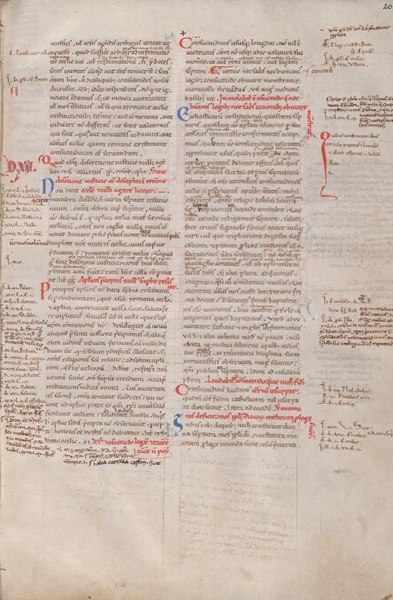The Decretum Gratiani, also known as the Concordia discordantium canonum or Concordantia discordantium canonum or simply as the Decretum, is a collection of canon law compiled and written in the 12th century as a legal textbook by the jurist known as Gratian. It forms the first part of the collection of six legal texts, which together became known as the Corpus Juris Canonici. It was used as the main source of law by canonists of the Roman Catholic Church until the Decretals, promulgated by Pope Gregory IX in 1234, obtained legal force, after which it was the cornerstone of the Corpus Juris Canonici, in force until 1917.
Page from medieval manuscript of the Decretum Gratiani.
Gratian
An illustration from a 13th-century manuscript of the work, illustrating the kinds of blood relatives and common ancestry which made marriage impossible and contracted marriages null. It has since then been changed so third cousins can now marry.
Thirteenth century modest copy of the famous manuscript Decretum Gratiani. Preserved in the Ghent University Library.
Canon law of the Catholic Church
The canon law of the Catholic Church is "how the Church organizes and governs herself". It is the system of laws and ecclesiastical legal principles made and enforced by the hierarchical authorities of the Catholic Church to regulate its external organization and government and to order and direct the activities of Catholics toward the mission of the Church. It was the first modern Western legal system and is the oldest continuously functioning system of law in the West, while the unique traditions of Eastern Catholic canon law govern the 23 Eastern Catholic particular churches sui iuris.
Image of pages from the Decretum of Burchard of Worms, the 11th-century book of canon law
Gratian, the "Father of Canon Law"
Cardinal Pietro Gasparri, architect of the 1917 Code of Canon Law
Portrayal of a meeting of the Roman Rota






